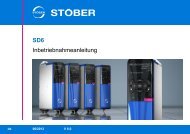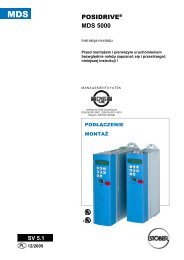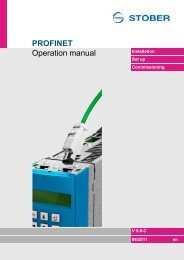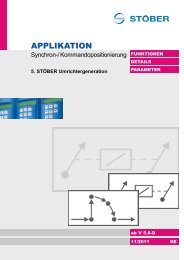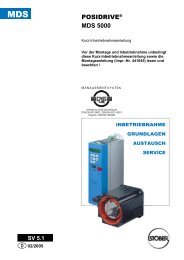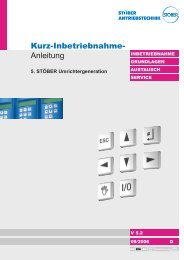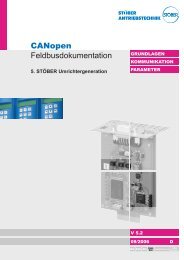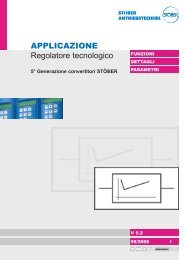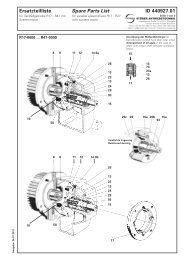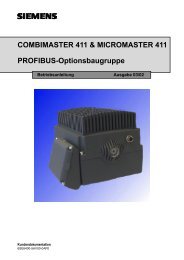we keep things moving - STÃBER ANTRIEBSTECHNIK GmbH + Co ...
we keep things moving - STÃBER ANTRIEBSTECHNIK GmbH + Co ...
we keep things moving - STÃBER ANTRIEBSTECHNIK GmbH + Co ...
Create successful ePaper yourself
Turn your PDF publications into a flip-book with our unique Google optimized e-Paper software.
Fundamentals of PROFIBUS<br />
Operation manual<br />
5<br />
5.3 Data transmission via PROFIBUS DP<br />
5.3.1 Possible communication<br />
Devices of the 5 th generation of STÖBER inverters support cyclic and acyclic<br />
services with the DP-V1 option. This provides a wide variety of possible ways to<br />
communicate:<br />
C2 - Master<br />
C2 - Master<br />
C1 - Master<br />
HMI<br />
1<br />
3<br />
2<br />
4<br />
Fig. 5-2: Different communication options<br />
1: Cyclic communication<br />
2 - 4: Acyclic communication<br />
Cyclic communication (1) is the simple exchange of user data via the data<br />
exchange telegram. Time critical process data (PZD) are exchanged bet<strong>we</strong>en a<br />
class-1 master (C1) and the drive controller with cyclic communication. Such data<br />
include, for example, reference and actual values, and control and status<br />
information. A routine for parameter communication (of the familiar PKW channel<br />
as with the FDS 4000) can be implemented within the cyclic communication.<br />
There is always exactly one C1 master in each PROFIBUS setup. This master<br />
reads the GSD file, configures the drives, starts PROFIBUS and runs the cyclic<br />
communication. The C1 master is usually the controller (arrow 1).<br />
The acyclic services (2-4) are available in DP-V1 for the transmission of new<br />
parameter jobs for controlling and monitoring the drives, parallel to true cyclic<br />
communication.<br />
WE KEEP THINGS MOVING<br />
ID 441687.03<br />
21




